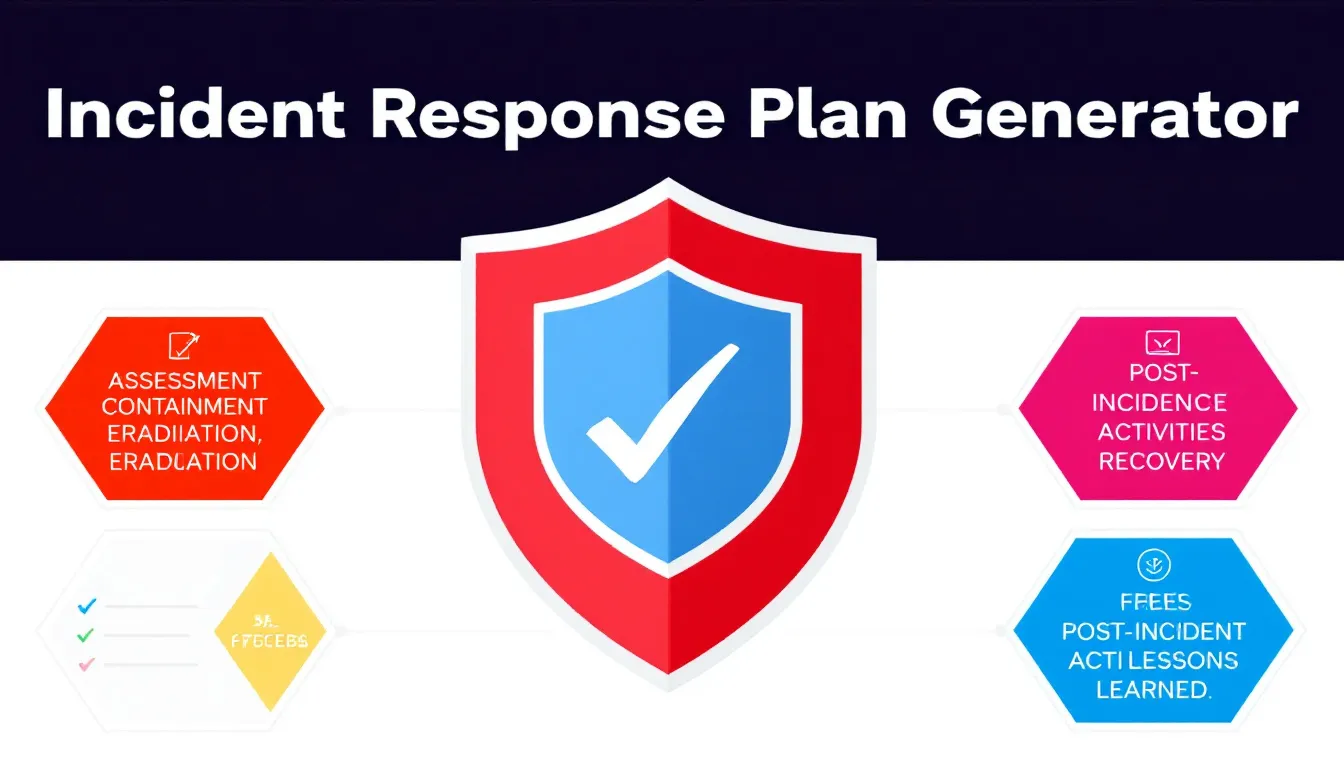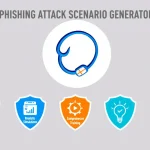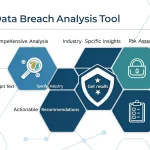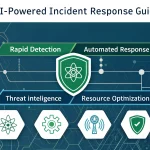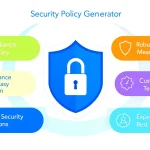Incident Response Plan Generator
Is this tool helpful?
How to Use the Incident Response Plan Generator Effectively
To make the most of our Incident Response Plan Generator, follow these steps:
- Organization Details: Provide specific information about your organization, including its structure, size, and industry. For example:
- “Large healthcare provider with 5,000 employees across multiple locations, specializing in pediatric care.”
- “Small financial services firm with 50 employees, focusing on wealth management for high-net-worth individuals.”
- Potential Risks: List the potential risks and vulnerabilities specific to your organization. Be as comprehensive as possible. Examples:
- “Ransomware attacks, social engineering, third-party vendor breaches, lost or stolen devices.”
- “Advanced persistent threats (APTs), DDoS attacks, cloud storage misconfigurations, insider threats.”
- Existing Security Measures (Optional): Describe any current security measures and protocols your organization has in place. This helps tailor the plan to your specific situation.
- Key Stakeholders (Optional): List the roles or titles of key personnel who should be involved in the incident response process.
- Regulatory Requirements (Optional): Specify any industry-specific regulatory requirements for data breach reporting and handling that apply to your organization.
After filling in the required information, click the “Generate Incident Response Plan” button. The tool will process your input and create a customized incident response plan tailored to your organization’s needs.
Understanding Incident Response Plans: Definition, Purpose, and Benefits
An Incident Response Plan (IRP) is a comprehensive, documented approach to addressing and managing the aftermath of a security breach or cyberattack. It provides a systematic and coordinated strategy for detecting, responding to, and limiting the consequences of a malicious attack against an organization’s information systems.
Purpose of an Incident Response Plan
The primary purposes of an IRP include:
- Minimizing damage from security incidents
- Reducing recovery time and costs
- Protecting sensitive data and assets
- Ensuring business continuity
- Maintaining stakeholder trust
- Complying with legal and regulatory requirements
Key Components of an Effective Incident Response Plan
A well-structured IRP typically includes the following elements:
- Preparation: Establishing policies, procedures, and a response team
- Identification: Detecting and assessing potential security incidents
- Containment: Limiting the impact of the incident
- Eradication: Removing the threat and its effects
- Recovery: Restoring systems and data to normal operations
- Lessons Learned: Analyzing the incident and improving future responses
Benefits of Using the Incident Response Plan Generator
Our Incident Response Plan Generator offers numerous advantages for organizations seeking to enhance their cybersecurity posture:
1. Customization and Relevance
The generator creates a tailored plan based on your organization’s specific details, potential risks, and existing security measures. This ensures that the resulting IRP is directly relevant to your unique needs and vulnerabilities.
2. Time and Resource Efficiency
Developing a comprehensive IRP from scratch can be time-consuming and resource-intensive. Our generator streamlines this process, allowing you to create a robust plan quickly and efficiently.
3. Compliance Alignment
By incorporating your industry-specific regulatory requirements, the generator helps ensure that your IRP aligns with relevant compliance standards, such as GDPR, HIPAA, or PCI DSS.
4. Structured Approach
The generator follows a systematic approach to incident response, covering all essential aspects of preparation, detection, containment, and recovery. This structured methodology helps ensure no critical steps are overlooked.
5. Stakeholder Identification
By prompting you to list key stakeholders, the generator helps clarify roles and responsibilities within your incident response team, facilitating better coordination during a crisis.
6. Risk Awareness
The process of using the generator encourages a thorough assessment of potential risks and vulnerabilities, promoting a proactive approach to cybersecurity.
7. Adaptability
As your organization evolves, you can easily update your IRP by re-using the generator with new information, ensuring your plan remains current and effective.
Addressing User Needs and Solving Specific Problems
The Incident Response Plan Generator addresses several critical needs for organizations of all sizes:
1. Rapid Plan Development
In today’s fast-paced digital landscape, organizations need to quickly develop and implement robust incident response strategies. Our generator significantly reduces the time required to create a comprehensive IRP, allowing businesses to enhance their security posture rapidly.
2. Risk Mitigation
By prompting users to identify potential risks specific to their organization, the generator helps businesses proactively address vulnerabilities. This risk-aware approach can lead to more effective prevention strategies and faster response times in the event of an incident.
3. Compliance Management
Many industries face strict regulatory requirements regarding data protection and breach reporting. The generator incorporates these requirements into the IRP, helping organizations maintain compliance and avoid potential legal and financial penalties.
4. Resource Optimization
Smaller organizations or those with limited cybersecurity expertise can benefit from the generator’s guidance in creating a professional-grade IRP. This levels the playing field and allows businesses of all sizes to implement robust security practices.
5. Continuous Improvement
The generator facilitates regular updates to the IRP, encouraging organizations to review and refine their response strategies continually. This iterative process helps businesses stay ahead of evolving cyber threats.
Practical Applications and Use Cases
To illustrate the versatility and effectiveness of the Incident Response Plan Generator, consider the following examples:
Example 1: E-commerce Startup
A rapidly growing e-commerce startup with 50 employees is handling increasing volumes of customer data and financial transactions. They use the generator with the following inputs:
- Organization Details: “E-commerce startup with 50 employees, specializing in sustainable fashion products. Handling customer data and payment information for online transactions.”
- Potential Risks: “Credit card fraud, data breaches, DDoS attacks, supply chain disruptions.”
- Existing Security Measures: “Basic firewall, SSL encryption for transactions, limited employee security training.”
- Key Stakeholders: “CEO, CTO, Customer Service Manager, Operations Lead.”
- Regulatory Requirements: “PCI DSS compliance, GDPR for European customers.”
The generator creates an IRP that focuses on:
- Implementing stronger authentication measures for customer accounts
- Establishing a dedicated security team and incident response roles
- Creating a communication plan for notifying affected customers in case of a data breach
- Developing procedures for quickly isolating compromised systems to prevent further data loss
- Outlining steps for PCI DSS and GDPR compliance in incident reporting and customer notification
Example 2: Regional Healthcare Provider
A mid-sized healthcare provider with multiple clinics across a state uses the generator with these inputs:
- Organization Details: “Regional healthcare provider with 1,000 employees across 10 clinics, specializing in primary care and outpatient services.”
- Potential Risks: “Ransomware attacks, phishing scams targeting medical staff, unauthorized access to patient records, lost or stolen devices containing PHI.”
- Existing Security Measures: “HIPAA-compliant EHR system, employee cybersecurity training program, network segmentation.”
- Key Stakeholders: “Chief Medical Officer, IT Director, Legal Counsel, PR Manager, Privacy Officer.”
- Regulatory Requirements: “HIPAA compliance, state-specific breach notification laws.”
The resulting IRP includes:
- Detailed procedures for identifying and containing potential ransomware infections
- A comprehensive communication plan for notifying patients, staff, and regulatory bodies in the event of a breach
- Steps for securing and recovering patient data from backups
- Guidelines for conducting post-incident forensic analysis to prevent future attacks
- Protocols for managing lost or stolen devices, including remote wiping capabilities
Frequently Asked Questions (FAQ)
Q1: How often should I update my Incident Response Plan?
A1: It’s recommended to review and update your IRP at least annually or whenever significant changes occur in your organization’s structure, technologies, or threat landscape. Regular tabletop exercises can help identify areas for improvement.
Q2: Can I customize the plan further after generation?
A2: Absolutely! The generated plan serves as a comprehensive foundation, but you should further tailor it to your specific needs, incorporate additional details, and align it with your existing policies and procedures.
Q3: How can I ensure all employees are familiar with the Incident Response Plan?
A3: Conduct regular training sessions and drills to familiarize employees with the IRP. Consider creating a condensed version or checklist for quick reference and distribute it throughout the organization.
Q4: What if I’m not sure about all the potential risks my organization faces?
A4: Start by listing the risks you’re aware of. Consider consulting with cybersecurity professionals or conducting a thorough risk assessment to identify additional vulnerabilities specific to your industry and organization.
Q5: How detailed should the organization details be?
A5: Provide enough information to give a clear picture of your organization’s size, structure, and main activities. Include details that might impact your cybersecurity needs, such as the types of data you handle or critical systems you rely on.
Q6: Can this tool help with specific industry compliance requirements?
A6: Yes, the tool takes into account the regulatory requirements you specify. However, for highly regulated industries, you may need to further refine the generated plan to ensure full compliance with all applicable laws and standards.
Q7: How do I determine who should be on the incident response team?
A7: Include representatives from IT, security, legal, HR, and public relations at a minimum. Also consider including leaders from critical business units and individuals with decision-making authority.
Q8: What if we don’t have all the security measures in place that the plan recommends?
A8: Use the recommendations as a roadmap for improving your security posture. Prioritize implementing the most critical measures first, and develop a plan to address the remaining recommendations over time.
Q9: How can we test the effectiveness of our Incident Response Plan?
A9: Conduct regular tabletop exercises and simulated breach scenarios to test your plan. These exercises can help identify gaps, improve response times, and ensure all team members understand their roles.
Q10: Should we include external partners or vendors in our Incident Response Plan?
A10: Yes, if you rely on external partners for critical services or if they have access to your systems, include them in your plan. Clearly define their roles and responsibilities in the event of an incident.
Conclusion: Empowering Organizations with Robust Incident Response Strategies
In today’s digital landscape, where cyber threats are constantly evolving and becoming more sophisticated, having a well-prepared Incident Response Plan is no longer optional—it’s a necessity. The Incident Response Plan Generator serves as a powerful tool in an organization’s cybersecurity arsenal, enabling businesses of all sizes to create comprehensive, tailored strategies for addressing potential security breaches.
By leveraging this tool, organizations can:
- Rapidly develop and implement robust incident response strategies
- Align their security practices with industry-specific regulatory requirements
- Identify and address potential vulnerabilities proactively
- Improve coordination and communication during crisis situations
- Minimize the impact of security incidents on operations and reputation
Remember, while the generator provides a solid foundation for your Incident Response Plan, it’s crucial to regularly review, test, and update the plan to ensure its continued effectiveness. By making incident response planning an ongoing priority, organizations can build resilience against cyber threats and protect their valuable assets in an increasingly complex digital ecosystem.
Take the first step towards enhancing your organization’s cybersecurity posture today by using our Incident Response Plan Generator. With a tailored, comprehensive plan in place, you’ll be better prepared to face the challenges of the digital age and safeguard your organization’s future.
Important Disclaimer
The calculations, results, and content provided by our tools are not guaranteed to be accurate, complete, or reliable. Users are responsible for verifying and interpreting the results. Our content and tools may contain errors, biases, or inconsistencies. We reserve the right to save inputs and outputs from our tools for the purposes of error debugging, bias identification, and performance improvement. External companies providing AI models used in our tools may also save and process data in accordance with their own policies. By using our tools, you consent to this data collection and processing. We reserve the right to limit the usage of our tools based on current usability factors. By using our tools, you acknowledge that you have read, understood, and agreed to this disclaimer. You accept the inherent risks and limitations associated with the use of our tools and services.
